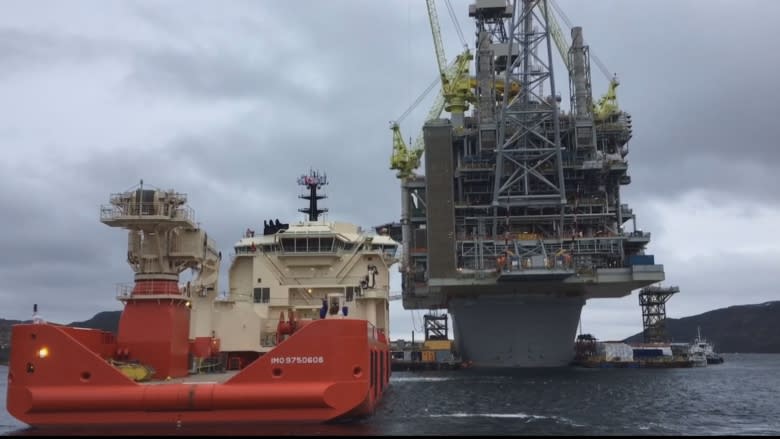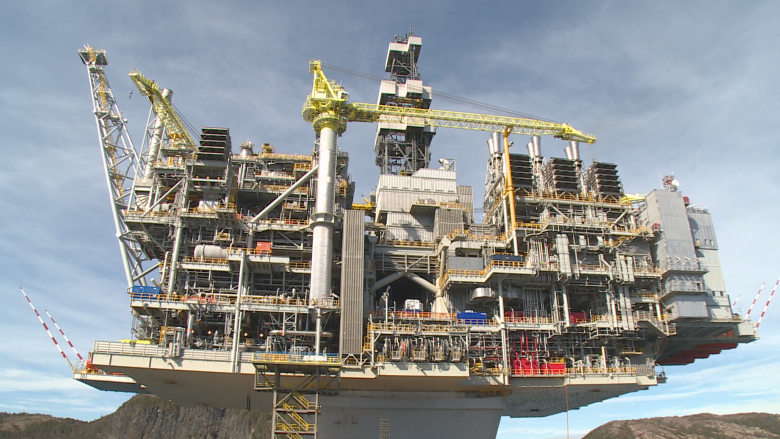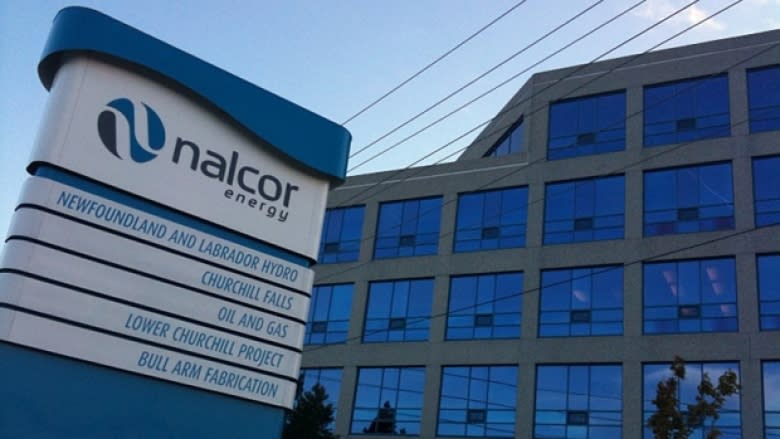Province spending nearly $800M on Hebron, with much lower royalties than expected
The Newfoundland and Labrador government, through its energy corporation, has invested nearly $800 million into an ownership position in the Hebron project, with returns that are much smaller than originally predicted because of lower oil prices.
Nalcor Energy vice-president Jim Keating confirmed the number for CBC News, and remains convinced it is a good investment for the province.
"We've paid our fair share," said Keating, who's in charge of the oil and gas division at Nalcor.
"We've got a great quality project that actually, in the global scale, is something to be envious of, and we're now about to get the return."
Oil prices plunge
Nalcor owns a 4.9 per cent equity stake in Hebron, a $14-billion project that is scheduled to become Newfoundland and Labrador's fourth producing offshore oil field by the end of 2017.
That came at a cost of $110 million for the original buy-in, and another $650 million for pre-production and construction costs.
Nalcor's equity stake may be a small percentage, but it comes with a big price tag — especially for a province that is struggling through a fiscal crisis, with the added burden of the Muskrat Falls hydroelectric project, which is years behind schedule and billions over budget.
When a deal to develop Hebron was signed in 2008, oil prices were well above $100 US per barrel, the provincial treasury was flush with oil money, and revenues from Hebron were estimated at about $20 billion over the lifetime of the project.
Now, oil prices are roughly half of what they were, the province is coping with massive deficits, and projected revenues for the province from Hebron have also fallen to about half of original estimates, or just shy of $11 billion, according to numbers provided by the Department of Natural Resources.
Plus, it will be years, perhaps five to seven, before the province sees any significant royalties from Hebron. That's because the Hebron agreement allows companies like ExxonMobil to cover their costs before higher levels of royalties are triggered.
Still a good deal, says Keating
But even under these circumstances, Hebron will bring great benefits to the province, and the decision to become a partner in the project was a good one, said Keating.
As a partner, he explained, Nalcor will profit about $1.5 billion from Hebron, with most of that coming during peak production over the next 10 years. That's after Nalcor's investment is fully recovered, and another $500 million is paid to the province in the form of a royalty.
Nalcor also has equity stakes in Hibernia South and the White Rose extension projects, at 10 and five per cent, respectively. Keating estimates that Nalcor's annual profits from its oil division could soon reach $250 million on daily production that could hit 20,000 barrels within five years.
"They're all very profitable projects," he said.
Cape Freels could be a saviour
Nalcor has been generating money from its oil division since 2010, with profits of nearly $60 million last year.
Much of that revenue has been reinvested into a seismic program that has revealed tremendous potential in the offshore.
Over the last three years, oil companies, including several new players, have pledged to spend more than $2.3 billion on exploration activities in the coming years, and Keating attributes this activity to the results of the seismic surveys.
He's especially upbeat about a prospect called Cape Freels, one of 350 leads identified offshore.
It's "the most attractive undrilled prospect in the world" that could be "somewhat of a saviour" for Newfoundland and Labrador's financial struggles, according to Keating.
"I think the world is watching what happens and in two to three years from now, I think we're going to have a very healthy exploration campaign underway," he said.
"We want two or three or four companies with separate plans concurrently drilling. That level of activity will be tangible."





